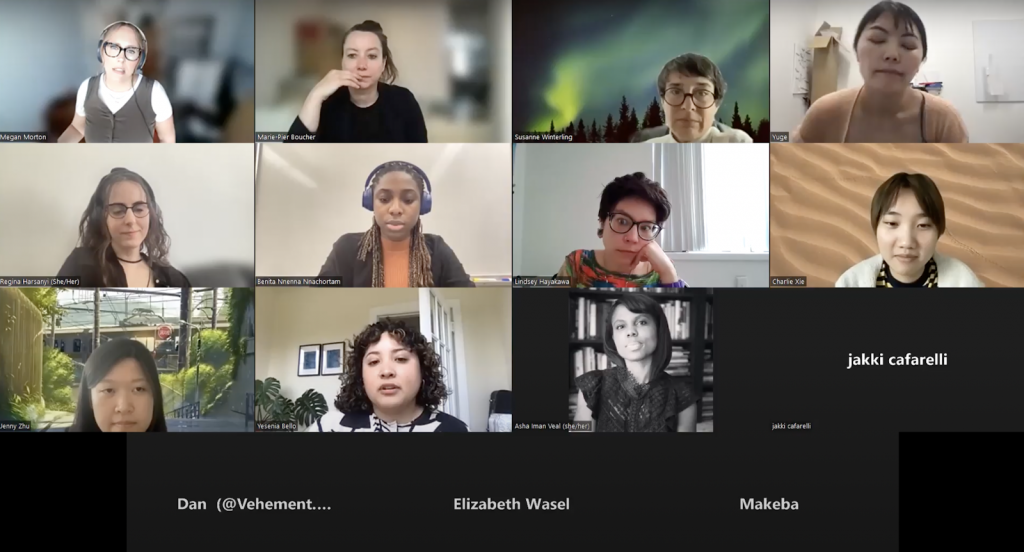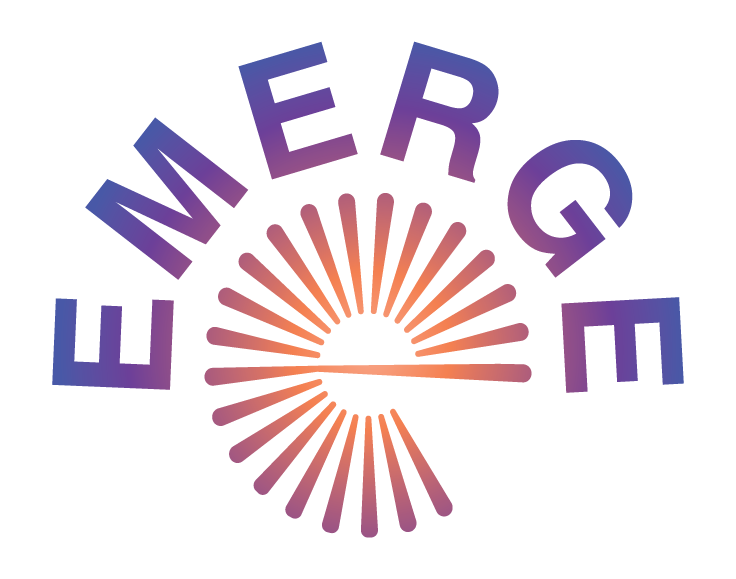Revisioning Technology and Cultural Spaces
A conversation with Marie-Pier Boucher, Regina Harsanyi, Susanne M. Winterling, and Yuge Zhou revisioning technology and cultural spaces
How can we re-imagine, re-evaluate, and re-identify cultural spaces? During a panel conversation held on May, 10th, 2022, artists and scholars Susanne M. Winterling, Time-based installation artist and Professor of Fine Art, Norway; Marie-Pier Boucher, Assistant Professor at the Institute of Communication, Culture, Information, & Technology, Toronto; Regina Harsanyi, Time-based media specialist and Adjunct Professor at SAIC; and Yuge Zhou, Curator and Time-based media artist (Chicago/Beijing) talked about the combined power of technology and culture to shape a post-pandemic future where we can re-imagine art and cultural spaces.
This panel was co-produced by Lindsey Hayakawa, Yesenia Bello, Inés Arango-Guingue, Benita Nnachortam, Meghan Morton, Charlie Xie, and Jane Grossman for the Arts Administration and Policy Department of the School of the Art Institute of Chicago. The following transcription was taken from a virtual symposium. To watch the entire symposium and hear more from the discussion, visit: www.saic.edu/news/breathing-together.

Regina Harsanyi: I’d like to start by saying I don’t like the term technology on its own in this context, because technology applies to even simple machines. Your pen or your pencil is technology, paper is technology. What do we mean by technology here? Also, technology in itself is neutral. It’s the way in which we humans design these technologies that have the power to instill positive or negative outcomes.
Susanne Winterling: I agree, I think that technology is like a hammer: you can build a house or you can kill someone with it. The Internet has worked in the same way. There is always a hype around new technology, just like it happened with printmaking and with the video camera. But the question is, what are they doing to us, to our daily infrastructures and to our relationship with consumerism, with being with and breathing with each other?
Marie-Pier Boucher: I collaborate with scholars from areas different from mine because they’re more interested in creating a community around a certain technology, rather than using technology to create a community. I think we could create social relations with the technology that we use; treat it not as just as non-human, but perhaps the same way we think about animals, see them as partners in the ecosystems that we create, and that we live in.
SW: To add to that, I’d like to point out that Tekne (in Greek) means “making”, like poiesis, but we don’t say we “make” a plant; the plant just came into being. This shows us we’re always differentiating technology from the human and our worldview and extractivist binary systems fall short when looking at the wonders of nature.
SAIC Moderators: In what ways do trends in art and trends in technology impact one another?
RH: As emerging technologies are developed, there tends to be two groups that use it first: the military and the artists. If artists are the second group to really start experimenting with any emerging technologies then, inevitably, they have an impact on that. And because of that, and the amount of money behind that, these companies are now listening to artists, for better or for worse.
Simultaneously, art is affected by new technology. For example, If you stand in front of a painting, and even if you don’t have any relationship to that particular process, you can still see the brushstrokes; you can see the pigment in a tangible way; you have an idea of the artists’ movement on a conscious or subconscious level. But with software -based work, particularly, it’s more hidden: you have access to the final version of the work in a way where you don’t, in most cases, see the programming languages or the file formats behind it. Our relationship is less process-oriented unless an artist chooses for it to be upfront.
SW: I don’t know how it is in Chicago, but here in Norway more and more students want to learn painting: the more they are on Instagram, the more they want to paint. There’s also another dynamic of analog photography being interesting again, or ceramics.
M-PB: To that point, I’d like to add that we can work to undo our assumptions about what we think digital technology can do for us in the art world. I really like the practice of a person based at MIT at the Self-Assembly Lab, his name is Skylar Tibbits. He argues that the digitalization of the world has facilitated a form of alienation from materiality by turning everything into zeros and ones. Which means we have not embedded the power of the digital and the kind of logic behind computation into materiality. He says that if we were to embed it, we could create products that are very different, like a jumpsuit that you could wear for a whole month, that would be self-sustaining, self-repairing, etcetera.
SW: Yes! You also have to understand not only the code, but also the hardware where things are running in order to understand the energy flows that are affecting the planet. The metaverse technology needs a driving motor. I find it particularly interesting that we talk as if technology is something that’s coming from the cloud, given to humans like fire. That’s actually not true!
M-PB: Perhaps it’s a matter of slowing down the pace or the velocity imposed by digital technology and asking ourselves: can we take another route? Is there another way to embed these logics outside of the binary code? We could start thinking about what computational logics can give us as material spaces or cultural spaces, but in physical terms! I don’t think the digital realm is absolutely necessary. I want to reject this idea that we will all inevitably finish living in an International Space Station from our own house, totally isolated from the rest of the world and only connected by the internet. I want to think that we should give ourselves the means now to resist this possibility!
RH: We could also spend a little bit more time recognizing ourselves biologically and the world around us, and maybe slowing down and appreciating why our world has evolved to create distance between countries, space, and time: why aren’t we naturally able to instantly connect to each other without a computer? And what can we learn from that, and appreciate from that?
SAIC Moderators: How can we collectively use the knowledge and technology that is already part of nature to think about how we create cultural spaces in the future?
M-PB: In asking ourselves what kind of art we want to make, we are also asking ourselves what kind of communities and institutions we want to build around art creation. What kind of exchanges do we want to have? How can we make technology work with us towards the creation of these environments?
A lot of people are interested in making systems that don’t work; technology and art that crashes. They are fully embracing the obsolescence, the ruins, and the leftovers. They are interested in negotiating with that failure rather than engaging with a big spectacle of technology that is opaque about its functioning. There’s this idea of opening the Black Box.
I think a lot about indigenous ways of understanding advanced technology because in Canada, the idea of decolonization is very important right now. In that sense, I think about advanced relationships amongst people with the land, with the objects, and the possibilities of replacing our idea of progress and technology with that of these advanced relationships.
Yuge Zhou: During the pandemic, I’ve seen a lot of institutions using alternative ways to tell stories about artists, or creating more programs that cater to international audiences, because now we are online and able to connect people from the globe. Regardless of how we can use technology or what technology means to us if there’s a way to help us bring out human emotion or connect with others, I think there’s a lot of room in culture for that.
